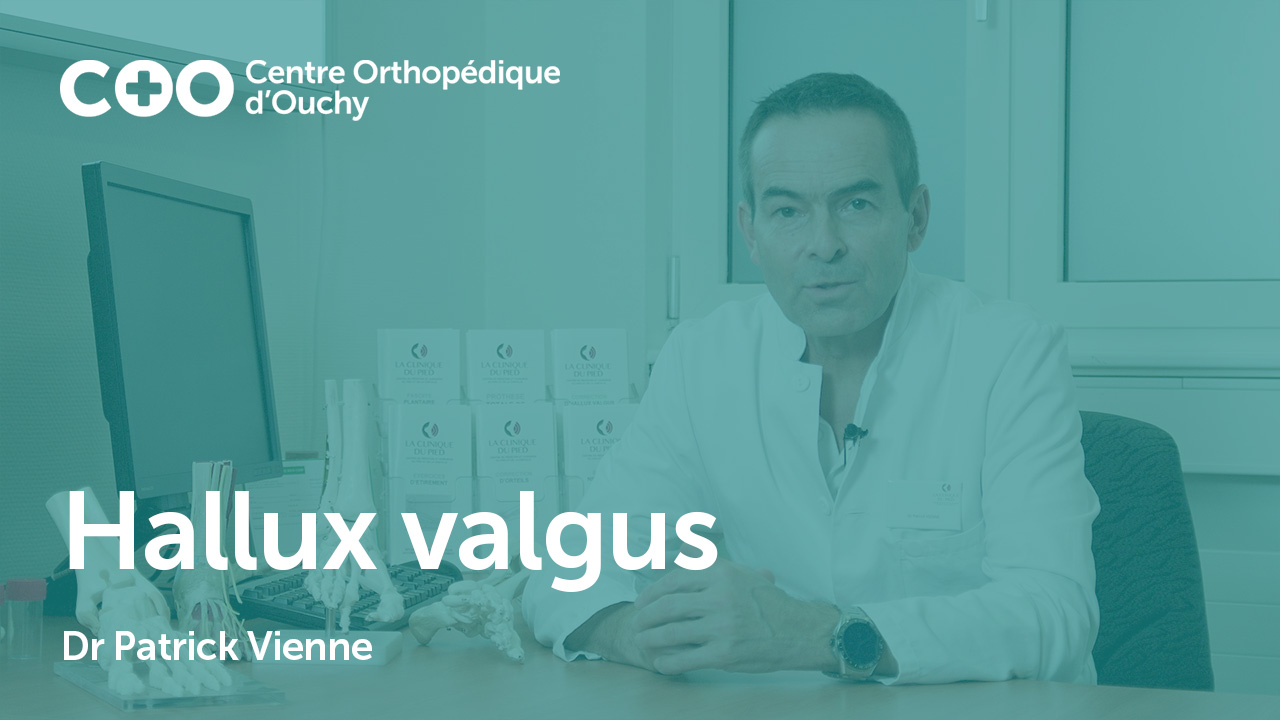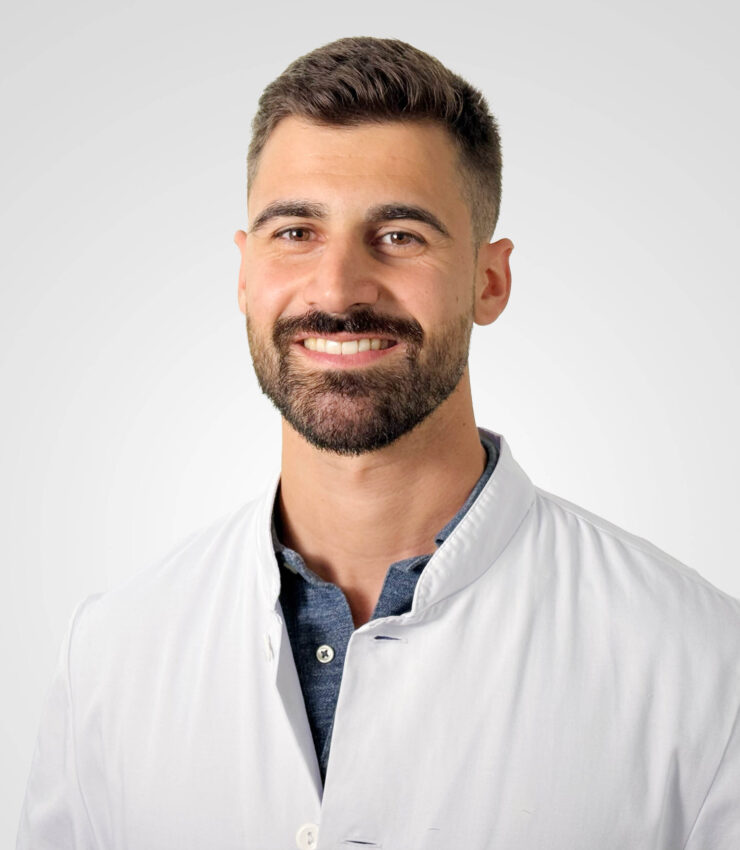Welcome - Foot orthopedist in Lausanne – Pathology: Hallux Valgus
Menu
Hallux valgus
Hallux valgus is a progressive deformity of the big toe that deviates outward from the foot. This condition mainly affects women after the age of 40 and is characterized by the appearance of a painful bony protrusion on the inner edge of the foot, commonly called a "bunion." This deformity alters the architecture of the forefoot and disrupts walking, causing pain that can significantly limit daily activities and the choice of footwear.

Causes
Hallux valgus results from a complex biomechanical imbalance of the forefoot. Hereditary factors play a major role, with familial transmission frequently observed. Prolonged wearing of unsuitable shoes, particularly high heels and shoes that are too narrow, aggravates the existing deformity. Functional hallux limitus, characterized by a lack of freedom of the long flexor tendon of the big toe, is a major triggering factor. This tendon restriction creates a rope effect that exerts significant tension on the metatarsophalangeal joint, gradually leading to its dislocation. Excess weight and certain foot morphologies, such as the Egyptian foot where the big toe is longer, also predispose to this deformity.
Symptoms
The deformity initially manifests as a visible enlargement of the forefoot and the gradual appearance of a bump on the inner side of the big toe. This bony protrusion becomes painful when rubbed in the shoe, creating local inflammation and sometimes redness. Patients experience pain when walking, particularly during propulsion, which can no longer be carried out correctly on the pulp of the big toe. Calluses form on the inner side of the toe and under the central metatarsal heads, indicating abnormal load transfer. Balance gradually becomes unstable, as the foot loses its main lever of stability. In advanced stages, adjacent toes may become deformed into claws, and secondary pain appears across the entire forefoot.
Treatments
Conservative treatment aims to relieve symptoms and slow the progression of the deformity. Footwear adjustment is the first therapeutic measure, favoring shoes that are wide in the forefoot with good heel support. Custom-made arch supports allow for better load distribution and relieve areas of excessive pressure. Physiotherapy plays a vital role in maintaining joint mobility and strengthening the intrinsic muscles of the foot. Proprioception and long flexor tendon stretching exercises improve overall foot function. Night splints and toe spreaders can provide temporary relief but do not correct the established deformity. Medical treatment with anti-inflammatories and local injections occasionally relieve painful flare-ups but are not a long-term solution.

Surgery
Surgery becomes necessary when pain persists despite conservative treatment and the deformity significantly limits daily activities. Modern surgical correction combines an osteotomy of the first metatarsal to realign the bone, a re-centering of the sesamoid girdle, and a release of the retracted structures. Endoscopic tenolysis of the long flexor hallucis is routinely performed to prevent postoperative stiffness and limit the risk of recurrence. This release of the tendon pulley eliminates the rope effect responsible for the progressive deformity. The procedure can be performed on both feet simultaneously, facilitating symmetrical gait rehabilitation. Weight-bearing is resumed immediately with a special therapeutic shoe worn for four to six weeks. Bone consolidation requires approximately three months, during which time appropriate rehabilitation allows a gradual return to normal, pain-free walking.
Want to learn more about hallux valgus?
On our Medicol website you will find additional detailed information.
This article is original and was created entirely by our team of referring physicians. Last updated September 17, 2025.
Our foot consultants
Our foot specialists
Dr Jacques Vallotton
- Referring Physician
- Specialist in orthopedic surgery and traumatology. SEMS sports physician
Dr Patrick Vienne
- Referring Physician
- Specialist in orthopedic surgery and traumatology. Foot and ankle surgery.
Would you like a consultation with one of our doctors?
Do not hesitate to contact us, we will be happy to help you.






